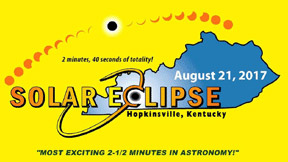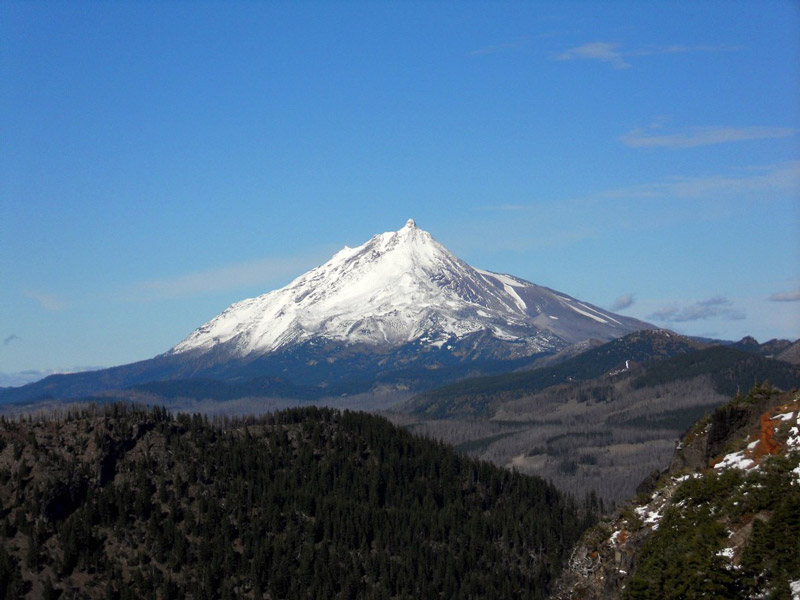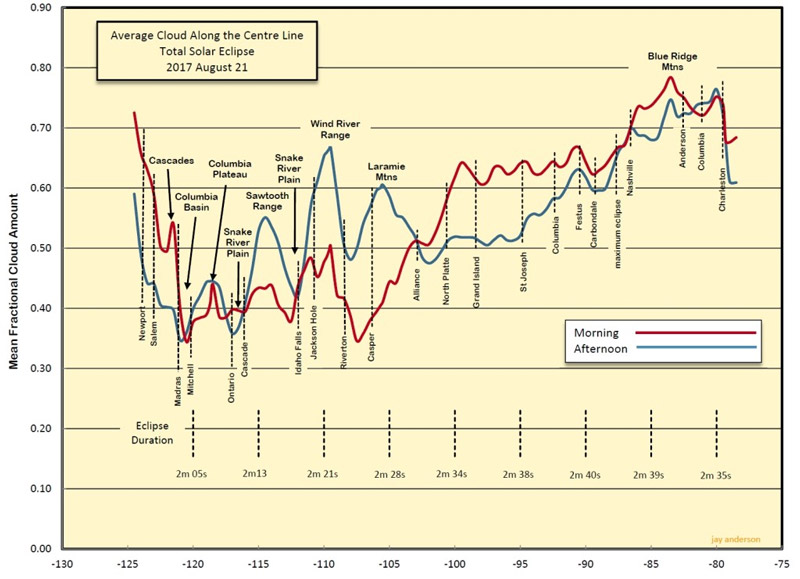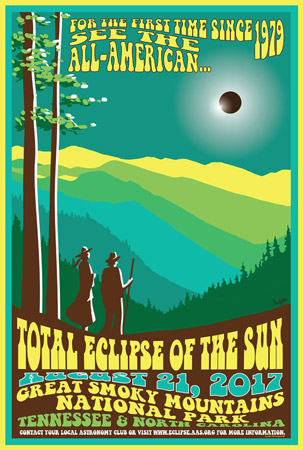Ten Excellent Places to See the Total Solar Eclipse of August 2017
By: Brian Ventrudo, Aug 27, 2015
Discuss this article in the forumsAnticipation is building for the great solar eclipse of August 21, 2017, the first total solar eclipse to be visible in the continental United States since 1979, and the first to run from coast to coast in nearly a hundred years. Most North Americans live within a one or two day drive of the eclipse path, so this will be one of the most watched astronomical events in history. Thousands of towns and highways lie along the path, which runs from Oregon to South Carolina. But where’s the best place to see this solar eclipse? Here are ten places, listed from east to west, to consider as you plan your eclipse-observing expedition for 2017:
#10: Columbia, SC. The eclipse reaches South Carolina at 3:36 p.m. EDT and exits the east coast of the state and the country at 3:49 p.m. EDT. Most of the state will enjoy a duration of totality of about two and a half minutes. Columbia is the last relatively large city in the eclipse’s path, and it lies within a day’s drive for millions on the east coast of the U.S. The town has plenty of hotels (but you will need to book ahead) and lies at the intersection of five interstates. Weather is the weak point for Columbia. It’s pretty steamy in the southeast in August, and the eclipse does occur during hurricane season.
#9: Great Smoky Mountains. Straddling North Carolina and Tennessee, the Great Smoky Mountains offer the potential for striking foreground scenery, especially at high points such as Clingmans Dome. There it may be possible to see the Moon’s shadow moving across the surrounding landscape at nearly a thousand miles an hour. Again, weather is the weak point here, and it may be difficult to maneuver out of the park at the last minute if the weather turns cloudy.
#8: Nashville, TN. The best thing about going to Nashville to see the eclipse is that, hey, you’ll be in Nashville. The drawbacks include the potential for clouds and the absolute certainty of big crowds. Stake out a position a little north of the city in places like Hendersonville, Gallatin, and Coopertown, where totality will last longer, nearly 2 minutes, depending on your location.
#7: Hopkinsville, KY. This town bills itself as the best place to see the eclipse because it’s near the point of maximum totality, where the eclipse lasts 2 minutes and 41 seconds. Because of the town’s marketing efforts, Hopkinsville will be packed with people and its hotels will be sold out long before the eclipse. You can stay in some of the smaller towns nearby such as Clarksville. Kentucky is a lush, green state, which means the prospects for rain and clouds are not ideal for eclipse chasers.
 Logo for the solar eclipse for Hopkinsville, Kentucky.
Logo for the solar eclipse for Hopkinsville, Kentucky.#6: Southern Illinois. If you want to evade the crowds in Kentucky and Tennessee, then southern Illinois is a good bet. The eclipse lasts just as long as near Hopkinsville, especially along the roads and farm fields just south of Marion, IL. The eclipse passes into Illinois from the west at 1:17 p.m. CDT and leaves at 1:25 p.m CDT. Weather bets are a little better than in the eastern locations listed above.
#5: St. Joseph, MO. This small city lies right on the centerline of the eclipse and will enjoy 2 minutes and 39 seconds of totality. Nearby St. Louis is just on the northern edge of the path of totality, while Kansas City is just on the southern edge. Residents of these cities can make a short drive south or north, respectively, to see the eclipse at its longest. Weather prospects are fair for this part of the state.
#4: The Nebraska Sandhills. For observers west of Missouri, the prospects for good weather improve considerably. Much of Nebraska offers a roughly 70% chance of favorable weather. The path of the eclipse runs from the northwestern to southeastern tips of the state from 1:46 p.m. MDT to 2:09 p.m. MDT. Highway I-80 from North Platte to Lincoln will serve as a main artery for eclipse chasers who can use the good road network here to move towards better weather. On the I-80 just south of Grand Island, the eclipse lasts 2 minutes and 30 seconds.
#3: Casper, WY. Nearly smack on the centerline of the eclipse, Casper will likely be a popular place for eclipse watchers. Hardier souls and photographers may head to Grand Teton National Park in the western end of the state. Both places offer good chances for clear skies. Because Casper is close to interstate highways, it offers more mobility than the parks. The eclipse enters western Wyoming at 1:34 p.m. MDT and exits eastern Wyoming at 1:49 p.m. MDT.
#2: Snake River Valley, ID. Expert eclipse watchers and photographers after the big money shots will likely head far west, to Idaho and Oregon, to see the solar eclipse of August 2017. Weather prospects are generally good for most of Idaho. In the eastern part of the state, Rexburg is a promising location. It’s just north of Idaho Falls and offers good roads for mobility. In the western part of the state, Highway 95 between Weiser (on the Snake River) and the Marin Creek Reservoir offers good odds for clear skies and totality durations of just over 2 minutes.
#1: Madras, OR. Central Oregon offers the best prospects for clear skies on August 21, 2017. The little town of Madras sits at the intersection of four highways, so you can move around to find the best sky. The cities of Salem and Portland, with their extensive lodging options, are a few hours away. Salem itself sits in the path of totality, so it will be a busy place. Viewers in Portland will only see a partial eclipse. Madras is just east of the lovely stratovolcano Mt. Jefferson, so observers will see the peak of the mountain darken 17 seconds before the Moon’s shadow descends on the town at a speed of more than 2,000 mph. The eclipse hits begins in the U.S. on the west coast of Oregon at 10:16 PDT, then moves into Idaho at 10:27 PDT.
 Mt. Jefferson, Oregon
Mt. Jefferson, Oregon(Note: A hat tip to the folks at GreatAmericanEclipse.com, who first listed these locations on their Facebook page. Their site also has good online maps of the above areas, as well as the entire path of this historic eclipse through the United States.)
If you’re looking for a good printed road map to help you navigate the path of this solar eclipse, Fred Espenak at MrEclipse.com offers just such a map at this link.
If you’re willing to travel and you’re not tied to a particular place in the United States during the eclipse, and if you have mobility to help you evade last minute clouds, then weather should be your primary consideration. The image below, from the website Eclipsophile.com, shows the expected morning and afternoon cloud cover across the line of maximum totality across the United States. As you can see, Madras and Ontario in Oregon, Cascade, Idaho, and parts of Wyoming and Nebraska offer the best odds for good weather.
 Average morning and afternoon cloud cover along the eclipse centreline extracted from 20 years of satellite imagery. The location of cities and towns along the track are indicated by dashed vertical lines above their names. Prominent topographical features are named above the graphs. Source: Patmos-X: CIMMS/ SSEC.
Average morning and afternoon cloud cover along the eclipse centreline extracted from 20 years of satellite imagery. The location of cities and towns along the track are indicated by dashed vertical lines above their names. Prominent topographical features are named above the graphs. Source: Patmos-X: CIMMS/ SSEC.
About the Author
Brian Ventrudo is a writer, scientist, and astronomy educator. He received his first telescope at the age of 5 and completed his first university course in astronomy at the age of 12, eventually receiving a master's degree in the subject. He also holds a Ph.D. in engineering physics from McMaster University. During a twenty-year scientific career, he developed laser systems to detect molecules found in interstellar space and planetary atmospheres, and leveraged his expertise to create laser technology for optical communications networks. Since 2008, Brian has taught astronomy to tens of thousands of stargazers through his websites OneMinuteAstronomer.com and CosmicPursuits.com.
***
This article is © Brian Ventrudo 2015. All rights reserved.
-
Final Announcement: We're Saying Goodbye to AstronomyConnect. Read Our Closing Notice.
Dismiss Notice
New Cookie Policy
On May 24, 2018, we published revised versions of our Terms and Rules and Cookie Policy. Your use of AstronomyConnect.com’s services is subject to these revised terms.


